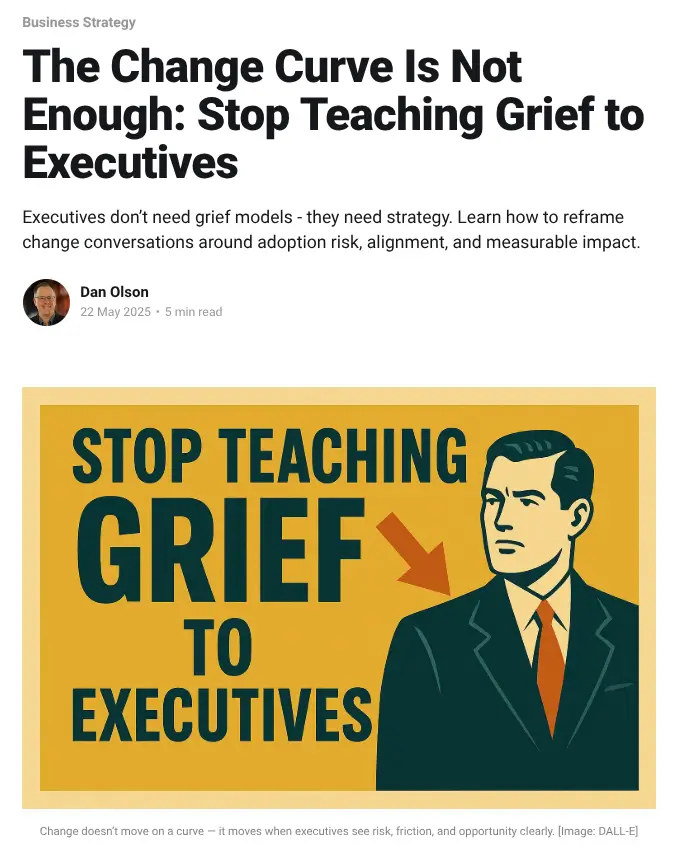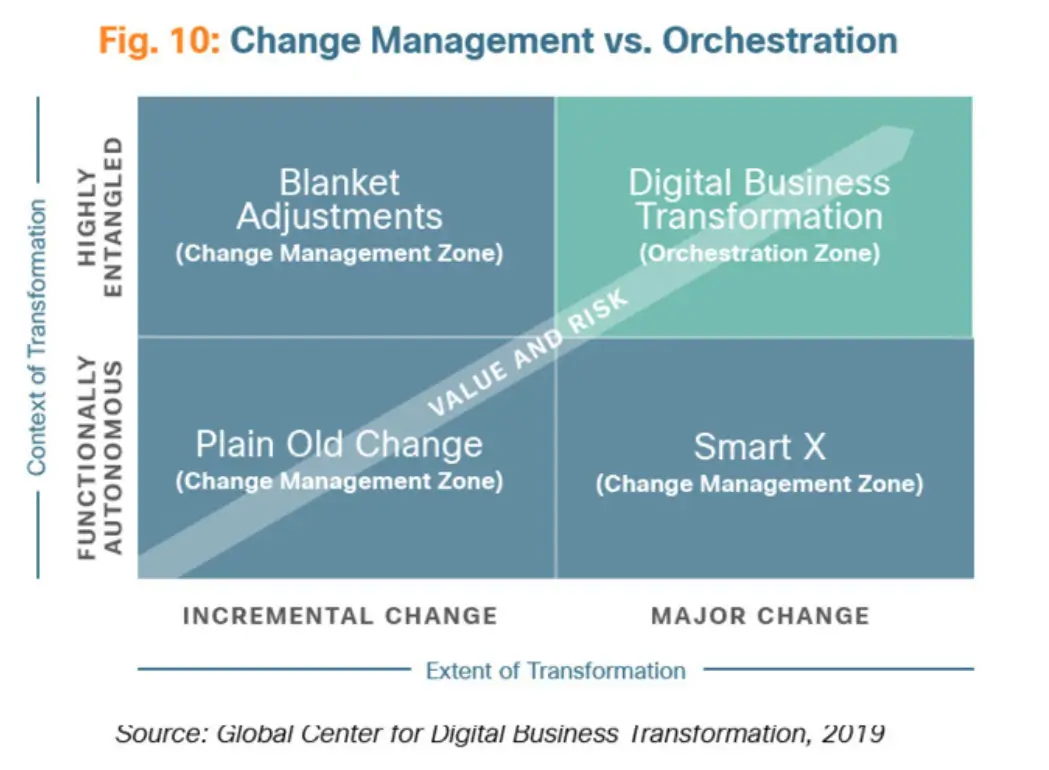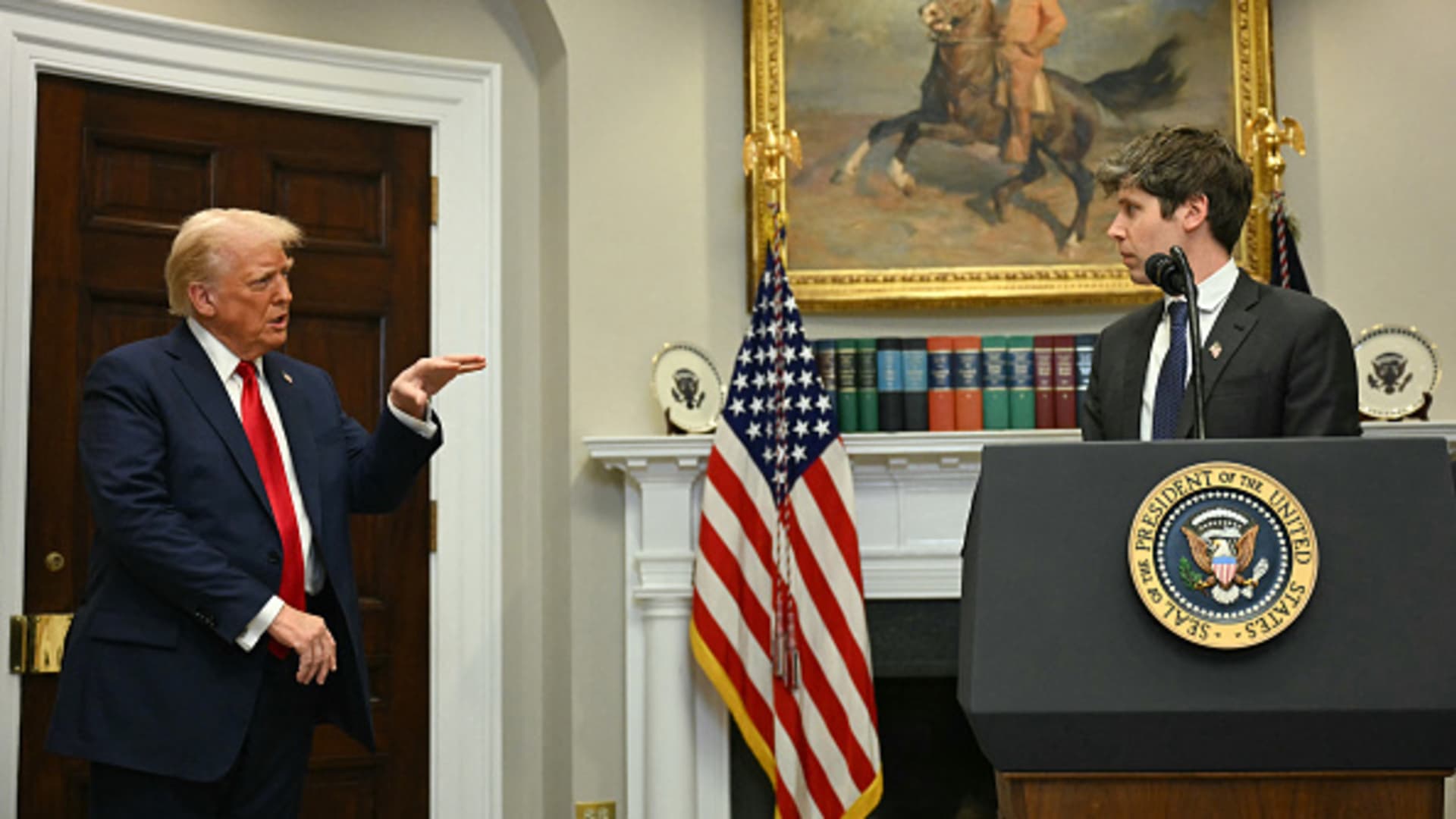
Issue #1, May 23, 2025
Intro: Why Moreover?
Welcome to the first edition of Moreover - a weekly field report for modern change leaders navigating AI, influence, and all manner of sundry challenges that come with driving meaningful work in messy systems. I launched this because I kept seeing the same pattern in my coaching calls, client projects, and hallway conversations: smart people doing important work, craving less noise and more clarity.
The name Moreover actually comes from my friend Joelle Goodwin, who has made a running joke of my tendency to drop that word into casual conversation. (Guilty.) It felt fitting - this newsletter is an extension of the ideas I’m already exploring in articles, in client work, and with fellow practitioners. Each week, you’ll get a curated mix: reflections on what I’ve been writing, trends I’m tracking, tools I’m testing, and questions I think are worth asking. Part magazine, part memo, part mirror - built for the people doing the work.
Moreover is designed as a slow scroll and a deep sip - something to savor alongside your morning coffee or afternoon exhale. It's a long-read on purpose. This isn’t inbox filler. It’s a reflective space carved out for people who think deeply about their work and want to keep growing.
In this issue:
- A Deep Dive into why you can’t build real change capability in a cost center
- A Week in Review of two recent articles on strategic influence and outdated models
- Three Field Notes on tools I use constantly: a transformation framework, a second brain system, and an AI analytics coach
- Plus, in Open Tabs, a curated mix of links on AI's rising environmental footprint, the politics of deregulation, and what change leaders need to pay attention to now.
Let’s get into it.

Deep Dive: Change Work Isn’t Overhead
or, You Can’t Build a Change Capability in a Cost Center
Change work is often praised in theory and sidelined in practice.
Executives say it’s critical. Teams rely on it. Outcomes depend on it. But when the spreadsheets come out and budgets get tight, change still gets treated like a cost to control rather than a capability to invest in. This piece unpacks the structural contradiction at the heart of most organizations: the belief that you can scale transformation while marginalizing the very function designed to support it. Spoiler - you can’t.
I. The Quiet Lie We Keep Telling Ourselves
Picture this: A high-performing internal change team has spent the last 18 months quietly making things work. They’ve helped stabilize a shaky transformation portfolio, coached leaders through turbulent decisions, and rebuilt trust where past efforts failed. The executive team loves their work - until budget season rolls around.
Suddenly, the change team is lumped in with shared services and operational overhead. Funding gets frozen. Headcount’s on hold. And just like that, a capability the organization was relying on becomes optional again.
Here’s the quiet lie we keep telling ourselves: that we can build strategic change capability while treating it like a support function. But you can’t scale influence from the margins of a spreadsheet. You don’t embed transformation by burying it under HR, L&D, or the PMO. If change is going to be core to how your organization operates, it has to live at the center of how decisions get made - and how money gets spent.
II. How We Got Here
The misplacement of change work didn’t happen overnight. In most organizations, change management landed wherever someone had budget and a vague understanding of “people stuff.” HR was the usual suspect - sometimes L&D, sometimes the PMO. It made sense at the time. Those were the teams tasked with enabling others. But capability doesn’t grow in the shade.
These functions are often structured as cost centers. Their job is to manage spend, minimize risk, and stay lean. There’s nothing wrong with that - but it’s a terrible place to anchor a strategic capability. It limits how change is framed, how it’s funded, and most importantly, how it’s valued. What started as a budgetary convenience has become a structural ceiling.
And that ceiling is showing. We see change teams stuck responding to intake requests instead of shaping portfolios. We see overwhelmed practitioners playing support roles on initiatives that are already off course. We see leaders praising “the change people” while quietly keeping them out of upstream strategy.
If you’ve ever tried to build influence while fighting for oxygen, you’ve felt this firsthand. It’s not that the organization doesn’t care about change - it’s that they’ve structurally deprioritized it. And unless we change where the work lives, we’ll keep getting the same results.
III. The Real Cost of Misplacing Change
When change lives in the wrong part of the org chart, you don’t just lose budget - you lose traction. You lose momentum. You lose your ability to deliver the future you just spent millions planning for.
Let’s start with the invisible costs. Underfunded change functions can’t invest in shared toolkits, scalable communications, or practitioner development. You end up with a patchwork of “change champions” and duct-taped decks. People burn out trying to influence without authority. Adoption suffers because alignment never had a chance to take root. And the whole time, the organization thinks it has a change strategy - when really, it just has a few tired playbooks and a handful of overextended practitioners doing their best.
The result? A slow erosion of trust. Employees grow skeptical of “the next big thing” because the last five weren’t delivered well. Leaders disengage because they don’t see real value. Change fatigue sets in—not because people resist change, but because the organization keeps lobbing under-resourced half-efforts at them.
Meanwhile, transformation projects quietly bleed out. Deadlines slip. Workarounds multiply. The cost center keeps its headcount flat and calls it a win. But enterprise-wide momentum dies in the margins.
Here’s the kicker: none of this shows up in the budget. It shows up in missed targets, team churn, customer confusion, and another year of “strategic priorities” that didn’t land. And when leaders finally ask why the change didn’t stick, they often blame the people, not the structure that kept those people underfunded, reactive, and three steps behind.
V. What Good Looks Like: Centering Change as Strategy
It doesn’t have to be this way. The organizations that treat change as strategic don’t bury it - they center it. They move it out of the cost center trap and give it a clear seat at the table. And not just in title, but in structure, budget, and influence.
In these orgs, change leadership lives inside the strategy function, the transformation office, or reports directly to the COO. It’s tied to the operating model - not just project delivery. The change lead is in the room when priorities are set, not brought in after the fact to “manage resistance.” And when decisions are made, they’re made with adoption risk, customer impact, and capacity constraints already in the conversation.
Funding looks different too. Instead of burying change under a shared service allocation, these organizations fund it through initiative ROI, operational impact, and leadership development. They understand that enabling execution isn’t a soft skill - it’s a force multiplier. And they invest accordingly.
What you start to see in these organizations is a shift in posture. Change practitioners stop playing defense and start helping shape the playbook. They standardize tool kits, coach leaders, track readiness over time, and align the entire system to strategic outcomes. There’s language for saturation. There’s discipline around prioritization. There’s space to build capability instead of chasing deliverables.
Here’s a snapshot of what good looks like:
- The change function is part of the strategic planning cycle.
- Executive sponsors understand adoption risk and own part of the change narrative.
- Change leads are embedded across key initiatives and lines of business.
- There's a clear maturity roadmap for building internal capability over time.
- Metrics track more than training attendance - they measure lift, lag, and momentum.
These aren’t aspirational ideas. I’ve seen them work. And they don’t just make change feel better - they make the business run better.
Because when change is centered, it stops being a tax and starts being a catalyst.
V. How to Shift It
Moving change out of the cost center isn’t just a structural shift - it’s a strategic choice. And it starts with how we show up, how we frame our work, and who we align ourselves with.
For practitioners, the first move is relationship-building - outside your usual circles. Partner with strategy, finance, and data teams. Learn their language. Show them how your work connects to adoption risk, revenue impact, and execution drag. Track outcomes, not just activities. Don’t wait to be pulled into the conversation - find where priorities are being shaped and bring your perspective early, often, and with confidence.
Elevate how you talk about the work. If your reports still center on “communication plans sent” or “training sessions delivered,” it’s time to reframe. What did you unlock? Where did you accelerate alignment or avoid churn? Start measuring influence, readiness, and traction.
One of the most successful change teams I’ve ever worked with operated as a pay-for-play internal service. If a business unit wanted change support, they had to fund it out of their own budget. That structure changed everything. The team wasn’t a cost to be absorbed - they were a capability to be earned. We used to say, “No bucks, no Buck Rogers.” It created clarity, commitment, and - most importantly - respect. Change was no longer seen as a soft add-on. It became a strategic lever you had to invest in if you were serious about delivery.
And that’s the shift we need: from available to essential. From support to strategy.
For executives and sponsors, the invitation is simple: look at where your change function lives - and ask if that matches its value. If change is critical to your roadmap, fund it like capability, not coverage. Move it out of the basement of your org chart and into the architecture of how strategy gets done.
That might mean creating a dedicated change capability within your transformation office. It might mean linking change maturity metrics to your enterprise scorecard. It might mean promoting the person who’s been quietly driving alignment behind the scenes. But whatever it looks like, make it visible, intentional, and aligned with the work that actually moves the business forward.
Because capability follows structure - and your structure is saying more than you think.
VI. Closing: It’s a Leadership Problem, Not a Budget One
At the end of the day, this isn’t really a funding issue. It’s a leadership one.
If you believe change is essential to your strategy, you can’t keep tucking it into places designed to manage cost, not create value. You can’t expect resilience to emerge from the margins. You don’t build adaptability, alignment, or capability in the leftover space between projects. You build it with intent. With investment. And with structural support.
Because capability doesn’t just grow - it’s built. And the blueprint matters.
This isn’t a call to inflate headcount or add process for the sake of it. It’s a call to recognize that where change lives - on the org chart and in the budget - shapes how it’s perceived, prioritized, and ultimately delivered.
Put simply: you can't scale transformation if change is treated like overhead. It's time to center it, fund it, and lead like it matters.
Week In Review: Translating Influence into Strategy
Each week, I use this space to zoom out and connect the dots. What’s trending in the field? What conversations keep surfacing in client work, coaching calls, or industry chatter? This week’s articles hit two different notes - one about stepping into greater influence, the other about letting go of outdated tools - but they’re both pointing to the same thing: change work is evolving. Below, you’ll find highlights and reflections from the week’s pieces.


This Week in Change: From bold provocations to practical pivots - explore why the Chief of Staff path is rising for seasoned practitioners, and why it’s time to retire the grief curve when talking to execs.
This week’s writing came from a familiar crossroads: where practitioner experience meets organizational power. In From Change Practitioner to Chief of Staff, I traced a pattern I’ve seen emerging in the field - seasoned change professionals stepping into Chief of Staff roles not as a pivot, but as a natural extension of their influence. These aren’t career detours; they’re power moves. When you’ve spent years shaping alignment, clearing fog, and creating space for decisions to stick, the leap to CoS isn’t so much a promotion as it is a reframe: same instincts, new altitude.
In The Change Curve Is Not Enough, I took aim at one of our most overused models. The Kübler-Ross-inspired change curve has become a kind of emotional shorthand in our field - but I think it’s time we admit that it’s not serving us in executive conversations. Leaders aren’t looking for grief counseling; they’re looking for traction. They want to understand risk, adoption, and alignment - not denial and bargaining. This piece was a push to retool our mental models, especially when working at the senior-most levels. If we want to be taken seriously in the boardroom, we need to stop leading with metaphors and start speaking in terms of outcomes and leverage.
Trend I’m watching: The center of gravity is shifting. Change leadership is no longer just about helping people through transition - it’s about helping organizations think clearly. The practitioners who thrive aren’t just empathetic; they’re strategic. They come armed with models that map to how executives make decisions, not just how employees process emotion. It’s a subtle but critical shift: from guiding feelings to guiding focus.
What do you think - are we witnessing a real redefinition of the change role, or is this just a niche evolution for a few senior practitioners? Have you seen your own work trend more toward strategic advisory lately? Let’s talk about it. Drop your thoughts in the comments - I’d love to hear how this is showing up in your world.
Field Notes: Orchestrating Transformation
My brother Jeff gave me the book Orchestrating Transformation by Michael Wade, James Macaulay, Andy Noronha, and Joel Barbier, and it has become one of my go-to references - something I routinely revisit in coaching sessions with practitioners and when advising clients on how to actually deliver on the promise of transformation.
The book introduces the idea of a “Transformation Orchestra,” a powerful metaphor that reframes change execution not as a solo act, but as an ensemble performance. Success doesn’t come from a single initiative or function - it comes from aligning strategy, structure, talent, culture, and technology in harmony. It’s not just about launching programs; it’s about coordinating them.

One of the most useful tools in the book is Figure 10 on page 33, a 2x2 that distinguishes between traditional change management and orchestration based on the extent of change and the context in which it lives. The sweet spot for orchestration is in the upper-right corner - major change in highly entangled systems. That’s where value is highest, but so is risk. It’s also the place where traditional change management tends to break down.
I love this diagram because it validates what many of us feel in our bones: incremental tactics won’t save you in a transformation. If you’re working in complex, interdependent environments - and most of us are - you need more than a comms plan and a few change champions. You need orchestration. You need integration across portfolios, intentional sequencing, and executive alignment from day one.
This framework has helped me shape better conversations with leaders. It gives them a way to locate where their efforts sit - and to realize that their burnout or confusion might not be about effort, but about misdiagnosed complexity. I’ve used it in the field more times than I can count, and every time it hits home.
If you’re working at the intersection of ambition and entanglement, this book - and this chart - are worth your time.
Field Notes: The PARA Method is a Game Changer for Second Brain Work
There are very few frameworks that permanently shift how I work across every tool and device I use. The PARA Method - originally developed by Tiago Forte - is one of them.
If you’re not familiar, PARA stands for Projects, Areas, Resources, and Archives. It’s a deceptively simple system for organizing all your digital information - files, notes, bookmarks, cloud folders, even emails - based on actionability, not storage location or file type. Once you get the hang of it, you stop thinking in terms of "where did I save that?" and start thinking, "what is this for?"
Personally, PARA has transformed how I manage my second brain in Obsidian. My vaults are now clean, purpose-driven, and aligned with how I actually think and work. It’s also helped me tame years of digital clutter - my devices, Google Drive, and my desktop are no longer chaos zones. And because the system is tool-agnostic, it holds up across platforms, projects, and phases of life.
But what really sold me was how well it works in client environments. I use PARA to organize my deliverables, working drafts, and reference material by client. Even when I’m inside a client’s Outlook or SharePoint ecosystem, I bring PARA in as a mental model. I sort my emails using PARA folders. I tag and archive project material accordingly. It gives me instant clarity on what’s active, what’s ongoing, and what’s just noise.
If you’ve ever struggled with keeping your knowledge work tidy - or if your brain is full of half-baked ideas, reference links, and things you swore you saved “somewhere” - this method is worth your time. PARA doesn’t just organize your files. It organizes your attention.
Field Note: Learning Fathom Analytics - One Screenshot at a Time
Here’s a confession: I didn’t know much about web analytics when I started publishing content on ChangeGuild.co. I knew I needed to track something, but terms like bounce rate, UTM tracking, and goal conversions were a blur. That’s when I took a screenshot of my Fathom dashboard, dropped it into ChatGPT, and asked, “What am I looking at?”
And just like that, I had an analytics coach.
One of the things I love about using ChatGPT is how visual learning and contextual feedback pair so well. I can upload a screenshot from my Fathom analytics - something that might otherwise be a wall of charts and numbers - and just ask, “Is this good?” or “What should I be paying attention to here?” The follow-up questions often surprise me: “Do you have event tracking enabled for CTA buttons?” “Have you filtered out your own IP?” “What’s your primary traffic goal - clickthrough, read depth, or subscriber conversion?”
That last one made me rethink how I structure my content flow.
ChatGPT walked me through the difference between unique visitors and engaged readers. It helped me understand how UTM parameters work - how you can tag links in posts or social platforms so Fathom can track where your traffic is coming from and which campaigns are converting. It even helped me configure Fathom to filter out my own site visits, which was skewing the numbers in the early days.
This kind of hands-on, conversational analytics support is a game-changer. I’m not just collecting data - I’m learning what to do with it, in real time. And when I hit a wall, I don’t go down a YouTube rabbit hole. I take a screenshot, upload it, and say, “Teach me what I need to know here.”
In a world of dashboards and data dumps, having an AI partner that can translate noise into signal has been one of the best upgrades to my publishing workflow. If you’ve been avoiding analytics because it feels overwhelming - you’re not alone. But you don’t have to figure it out on your own.
What surprised me most is how this same approach works across the board in my change work. Whether it’s pulling Salesforce reports, looking at survey data from a change readiness assessment, or analyzing user adoption metrics from a software rollout - any time I hit a wall, I screenshot it and start a conversation. “What’s this telling me?” “What’s normal here?” “What should I be looking for over time?”
It’s changed the tempo of how I work with data. I’m no longer waiting for a data analyst to interpret it or sitting in meetings pretending to understand an executive dashboard. I’m engaging with the numbers directly, at my own pace, and learning as I go. And I bring that learning back into client work - asking sharper questions, telling better stories with the data, and showing leaders where to look instead of where to hide.
Open Tabs: AI is Hungry
These are the articles I’ve had open, bookmarked, and bouncing around in my brain this week — stories that linger long after you close the tab. This time, they’re all circling the collision between AI’s acceleration and the resources it quietly consumes. From rising energy bills and water grabs to buried deregulation efforts, it’s clear: the infrastructure powering AI isn’t just technical - it’s environmental and political. If you're leading change, these aren’t background issues. They're the new terrain.
In the AI Essentials for Change Management course I teach, we spend focused time on the ethical and environmental implications of AI. The recent pieces from Ars Technica and CNBC listed below hit especially hard: one reveals a buried decade-long AI regulation ban, the other shows OpenAI lobbying for speed over safeguards. These aren’t fringe stories - they signal an “off the rails” moment where short-term advantage may be eclipsing long-term responsibility. Practitioners need to stay sharp, because the systems we’re guiding people through are being shaped in real time.


While AI headlines often focus on innovation, the environmental costs are piling up just outside the frame. Reports from WIRED, The Guardian, The Washington Post, and News from the States expose the growing tension between big tech expansion and local resources. We’re talking massive water consumption, surging electricity demand, and the quiet reshaping of public infrastructure to meet private AI ambitions. These aren’t edge cases - they’re a preview of what happens when transformation outpaces stewardship. If you’re a change leader, this is your context now. Build accordingly.


Thanks for Reading
Thanks for joining me for the very first issue of Moreover. I’m glad you made it all the way through - this is a space for deep thinkers, curious practitioners, and anyone trying to do real work in systems that don’t always make it easy. My hope is that this becomes a trusted part of your week - a little signal in the noise.
Moreover goes out every Friday morning, with regular posts landing Mondays and Thursdays, and a new educational feature dropping every other Saturday. That Saturday edition will go deep on a single topic related to change, AI, or practitioner practice. (We’re still working on the name - suggestions welcome.)
If you liked what you read, subscribe so our content lands in your inbox every week. Additionally, tell a friend, forward this issue, and drop me a note - I'd love to hear what resonated, what didn’t, and what you'd like to see more of. Shoot me a message anytime.
Lastly, a heads-up: Moreover is free for now, but starting in August, I’ll be launching ChangeGuild+—a premium tier for subscribers who want the full experience. That will include access to the complete archive, deeper frameworks, templates, tools, and longform strategy pieces just for paying members. You’ll also get the ability to comment on articles, which turns the newsletter into more of a conversation—giving you a chance to connect with fellow practitioners, share your take, and build on the ideas together. So for now, enjoy Moreover while it’s still on this side of the firewall.
More soon - and as always, onward.
ChangeGuild: Power to the Practitioner™









